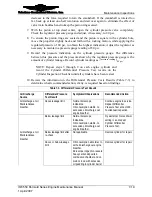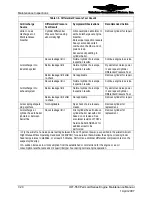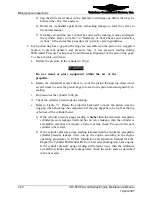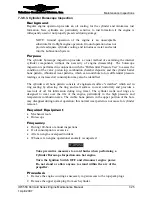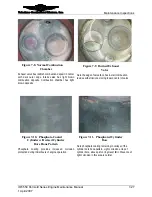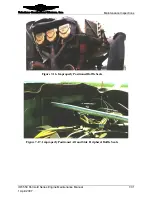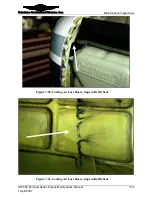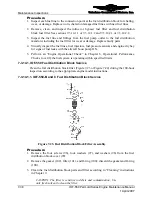
Teledyne Continental Motors, Inc.
TM
Maintenance
Inspections
Figure 7-7.
Piston Ring Positions
4.
The
static seal
(Figure 7-6) on the engine cylinder consists of the following:
a.
Cylinder head-to-barrel seal.
b.
Spark plug-to-spark plug port seals.
c.
Valve-to-cylinder seat seal.
5.
To check these static seals while the cylinder is still installed:
a.
Check the cylinder head-to-barrel seal for leaks by applying a soapy solution
between the fins. If bubbling appears, the seal is leaking; replace the cylinder.
b.
Apply a soapy solution around both spark plug seals to check for leakage. If
bubbling appears, the seal is leaking; replace the cylinder.
c.
Record the results Table 7-11, the “Cylinder Inspection Checklist.”
d.
No leakage is allowed in the static seals. If leakage is noted between the cylinder
head and barrel, replace the cylinder as instructed in Chapter 10, Non-Overhaul
Repair and Replacement” in this manual.
e.
Refer to the summary of dynamic and static seal checks and corrective action
chart (Table 7-4) at the end of this procedure for corrective action:
1)
If the cylinder pressure gauge reading now is
higher
than the previously
determined minimum acceptable cylinder pressure leakage limit, record
Differential Pressure Test result as passing.
2)
If no leakage was detected and the cylinder pressure gauge reading remains
lower
than the previously determined minimum acceptable cylinder pressure
leakage limit and prior to performing any invasive inspections, perform a
“Cylinder Borescope Inspection” according to instructions in Section 7-3.8.3.
NOTE: If the Cylinder Borescope Inspection does not reveal a
faulty condition, fly the aircraft at a cruise power setting between
65 and 75 percent power, as specified in the Airplane Flight
IOF-550 Permold Series Engine Maintenance Manual
7-23
1 April 2007











